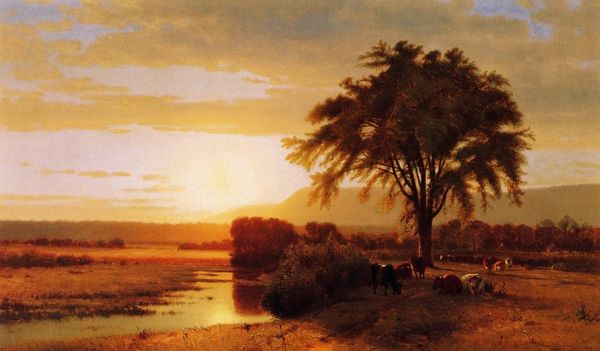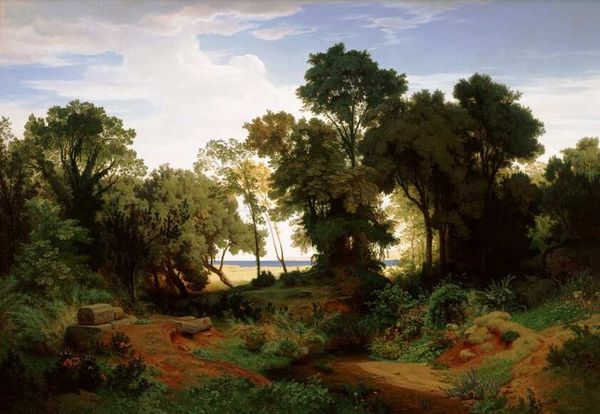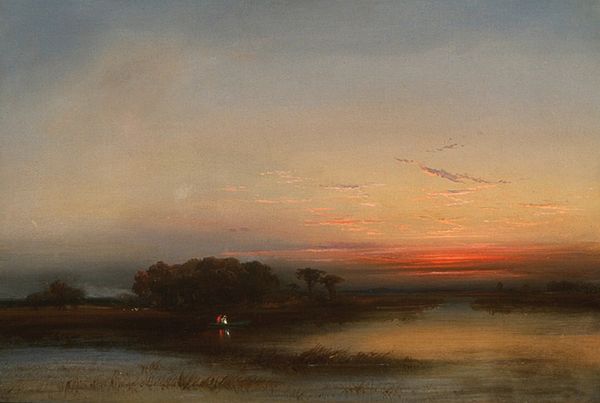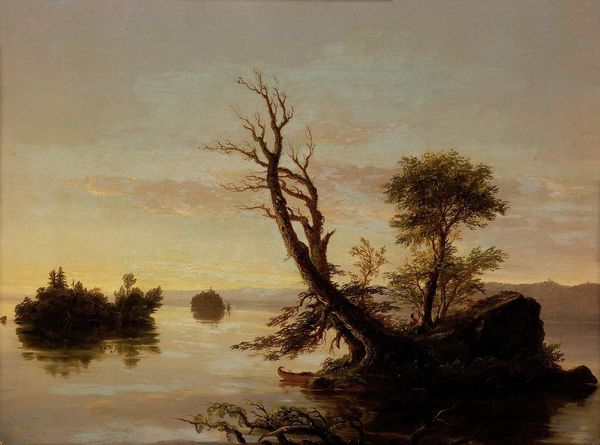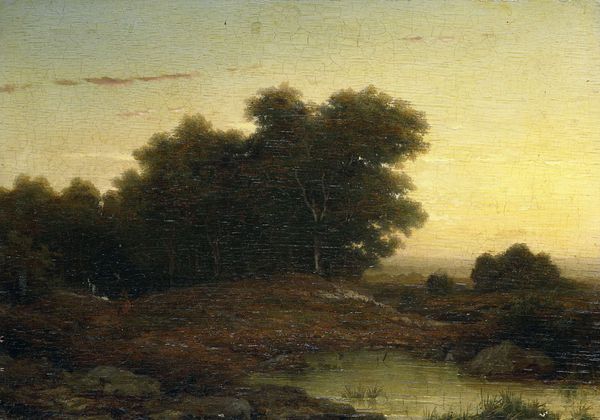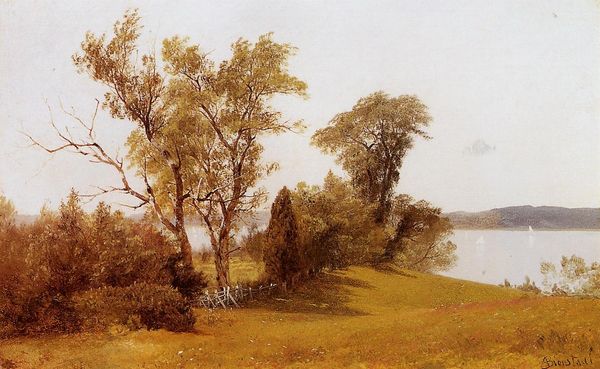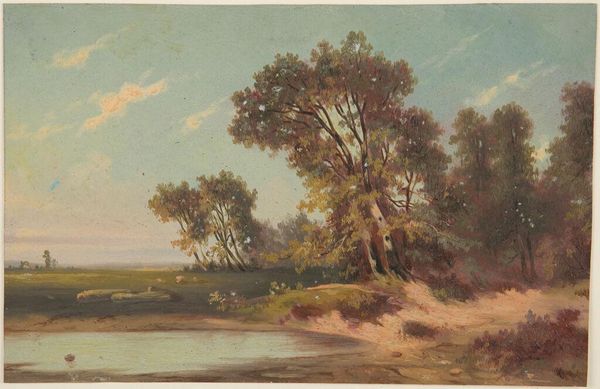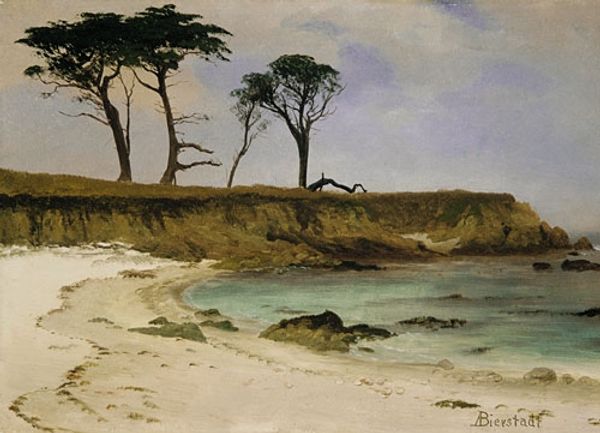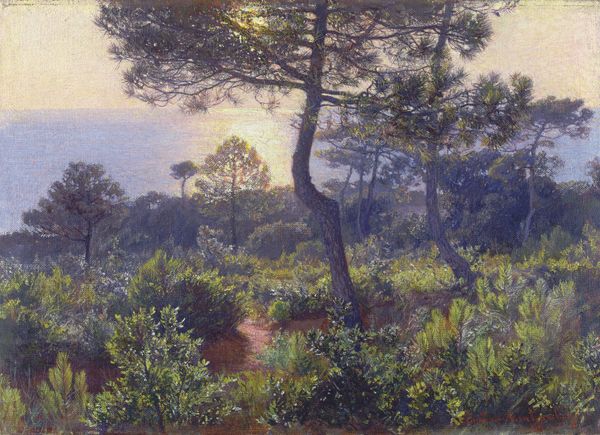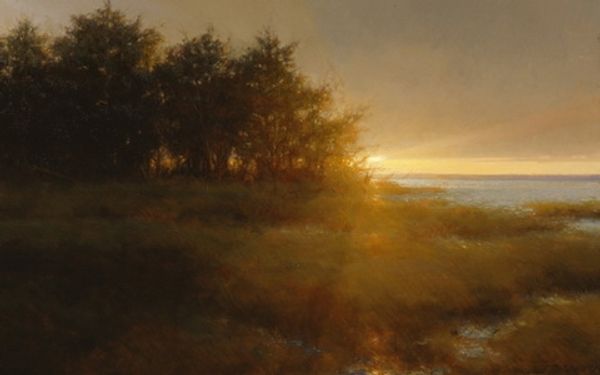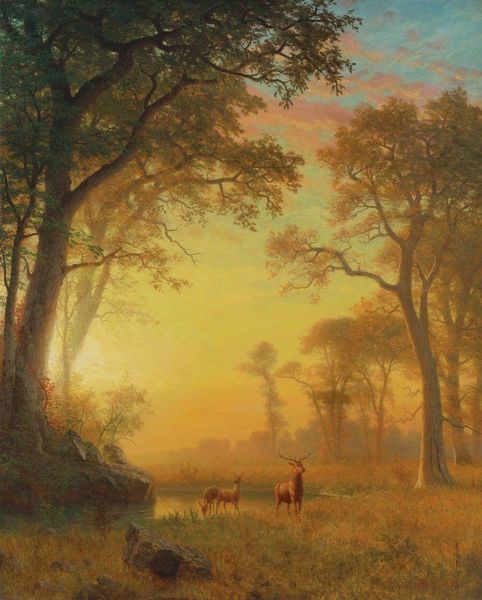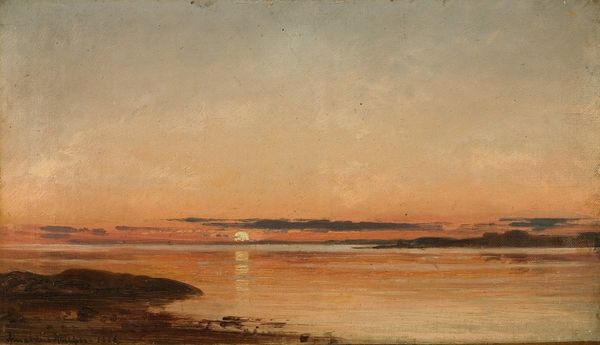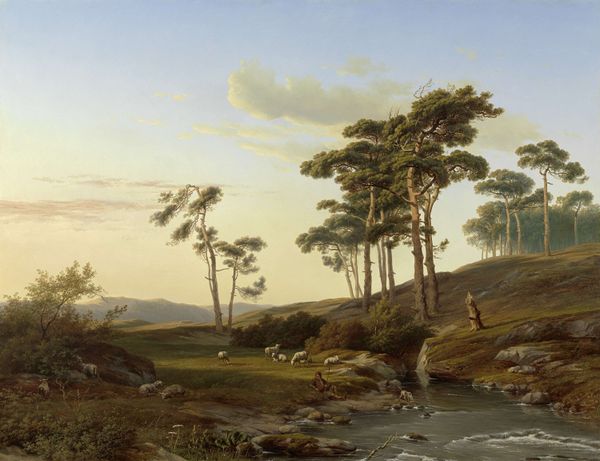
Dimensions: 76.8 x 128.6 cm
Copyright: Public domain
Curator: The tranquility is almost palpable. It feels like a carefully constructed stage. Editor: It is, in a way. We're looking at "Gosnold at Cuttyhunk," painted by Albert Bierstadt in 1858. He captures Bartholomew Gosnold's landing on Cuttyhunk Island in 1602. As you can see, it is an oil-on-canvas artwork in the style of the Hudson River School, with elements of Romanticism and plein-air painting. Curator: Yes, it absolutely sings with Romantic ideals, and the light. Look at how golden and dreamlike it is! The composition—that gentle recession into depth with the ship in the background, tiny figures…it evokes a sense of discovery. The ship, a symbol of both hope and the unknown. The trees, framing the stage with what they represent. The water reflecting like a mirror into something spiritual, perhaps even unknown. Editor: And the context surrounding Gosnold is pivotal to its meaning. This wasn't simply about exploration. Gosnold sought to establish a colony. This scene speaks volumes about the socio-political forces in play, reflecting America's burgeoning sense of self and destiny, and, more problematically, colonization. Curator: Ah, a paradise, but at what cost? The deer are especially telling: images of nature that hint towards abundance while suggesting something about nature’s response to man's interventions in its processes. Are they symbols of abundance or are they in some ways representations of something threatened? The duality feels pertinent. Editor: Precisely. Bierstadt, a German-American artist, taps into a deep vein of cultural anxieties and aspirations here, even ambivalences. This work isn’t just documenting history, but actively participating in shaping a historical narrative for the time. We're viewing not only Gosnold's landing, but the political theater of nineteenth-century America's self-image, idealized and simultaneously fraught. Curator: I hadn't thought about it that way. Seeing how landscape is often a stage upon which cultural dramas play out casts so much light upon our past. Thanks! Editor: Of course. It’s about considering the complexities of art, context, and the stories we continue to tell ourselves.
Comments
No comments
Be the first to comment and join the conversation on the ultimate creative platform.
